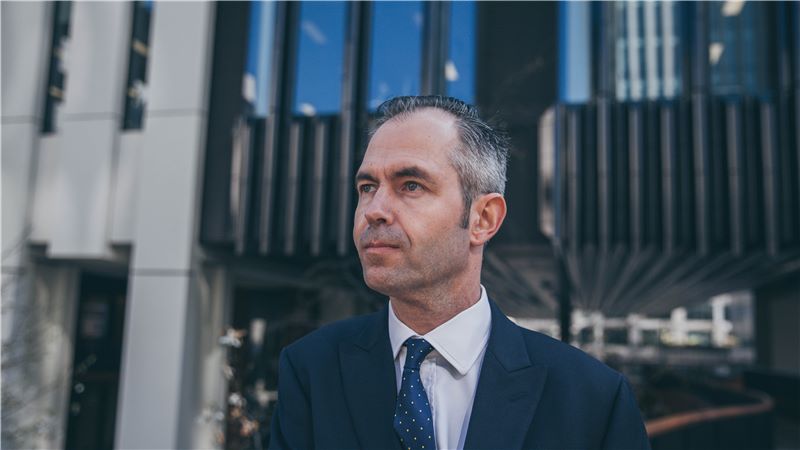A holistic approach: Airport design, construction and management
Passenger numbers at airports around the world are regularly breaking records again. While this is, of course, positive for airlines and the airports themselves, as well as the ecosystem that makes an airport tick, it puts into sharp focus the need to maintain and enhance the infrastructure that makes flying a pleasant and efficient process for passengers around the globe.
There are few places that provide a greater sense of familiarity around the world than airports. It is this consistency that, in large part, enables passengers to follow understood processes to enhance their own experience, whatever country they are in. People and processes are important, but how we build airports has a considerable influence too. Here, Mace’s Global Head of Aviation, Carl Dainter, explains how firms responsible for building and enhancing airports can aid this sense of consistency, providing passengers with a pleasant and frictionless, yet bespoke, experience throughout their journey.
A holistic approach
It’s very hard to achieve consistency with a piecemeal approach. At the very least, it means a lengthy and laborious process to bring together parties on very different paths and trying to explain that they all need to end up in the same destination. Tying together the different strands of delivery, from initial design principles to construction sequencing to technology integration and everything in between brings countless benefits (and challenges) and requires a holistic approach.
The delivery partner model – providing end-to-end capability across all elements of a project or programme lifecycle – has proven its worth in meeting these challenges. It combines the principles of programme management during pre-construction phases and delivery oversight during the period of construction to provide consistency, value for money, transparency and a single point of responsibility. Across major transit schemes in the UK, Middle East and North America, I’ve seen the value this approach brings, engaging all stakeholders – from the airlines, to regulators, to governments and passengers – and aligning to a common goal from the outset. There are always differences in opinion and challenges to overcome, but making it clear early on that there is a defined vision that requires a team effort to be met sets the right tone for the remainder of the programme. The benefits of this are greater confidence in the schedule and an overall reduction in investment for the desired, high-quality outcome.
The holistic view needs to transcend the entire airport ecosystem, offering a dependable delivery approach for not only terminal infrastructure, but cargo facilities, car parks, hotels and other ancillary components too. There are few more important elements of a futureproofed airport than the ability to bring sustainable fuels into the mainstream. This must (and will) be a focus, as the industry responds to the net zero carbon challenge.
Standardised, not sterile
Standardising elements of design at airports around the world boosts the safety and comfort of passengers and staff. Crucially, this design standard needs to be inclusive and reflect the diverse range of people using any given airport on any given day. From facilities for children and the elderly to multifaith toilets, these considerations matter at every stage of delivery, right through to operation. Getting this right gives passengers the confidence that their needs will be catered for, regardless of the airport they are arriving at.
On the topic of confidence, movement through airports can be one of the more daunting elements of a passenger’s journey. Around the world, we see a consistent airport aesthetic for wayfinding and signage. From multiple languages to easy-to-understand iconography, and appropriate placement in easy-to-see locations, the best airports have factored all of this in at the earliest stage of design, with passenger experience placed front of mind for every organisation involved.
Designing and building airports with a degree of consistency does not have to mean a sterile and stale experience. Standardisation provides a solid and safe foundation, but there is plenty of room for personalisation and alignment to the specific cultural values of a given country. Whether it’s the finer details of the fit out or the encouragement of vendors selling local cuisine, there are multiple ways of creating an experience that feels exciting and interesting, within a familiar framework. It’s also a recognition that, for many passengers, the airport represents a first view of a new country and, therefore, offers a reflection of the culture and environment beyond. Even for transiting passengers, this is fundamentally important. Today’s passenger just passing through can be tomorrow’s curious visitor if their initial snapshot piques interest.
Perhaps the most striking example of this is Singapore Changi Airport, famous the world over for its ‘discovery garden’. It’s a symbol of what can be achieved with a shared commitment to reflecting the nation’s rich biodiversity while offering service excellence for passengers and building sustainability into design.
Digital and data at the heart
Data, and the effective use of it, underpins consistency in the world of major infrastructure delivery and, along with digital innovations, is also at the heart of understanding and enhancing passenger journeys. Again, this alignment across design, delivery and operation lends itself to an integrated delivery partner model, whereby a golden thread connecting data systems (which may expand and develop over time) is implemented early on. I’ve witnessed this benefit first hand on a major airport programme in the Middle East, where we’re working collaboratively with the client, architect and whole supply chain to collate data and drive early coordination against common goals that will lay the foundation for long term success. This should apply in terms of construction delivery, as well as asset management and in the running of the airport once complete.
A programme management office (PMO) provides the tools and processes to robustly store, assess and share data; it creates a single source of the truth for everyone involved in the design, delivery and operation of an airport… providing there is an open and transparent culture that breaks down silos in the pursuit of a common goal. At Mace, that openness transcends our projects and programmes. We know that the lessons we learn at one airport can influence and enhance how we deliver works at another and by running a PMO that is scalable and adaptable, we’re able to hit the ground running. Our digital PMO at Manchester Airport is a live example of this, tailoring a proven model to bring together people from across seven separate projects, sharing data and ensuring coordination of workstreams. This provides a single version of the truth, enabling confident and timely decision making.
The lessons must continue to come beyond delivery of airport infrastructure. The way that passengers interact with and react to the airport environment should be captured and fed into future plans for development. The customer is king, after all, and with more than ever passing through airports around the world, we’re looking at a treasure trove of data to make airports future-proofed, ready for the next generation of travellers and their diverse expectations.
This article first appeared in International Airport Review.









.png?h=100&w=100&la=en&hash=7323A6E2312893951EFC68F187706C33)



